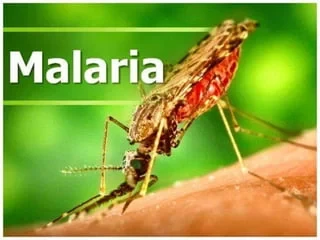
Studies have shown that in Zimbabwe, most artisanal and small-scale gold mining (ASGM) is dependent on mercury, and the sector is allegedly the largest source of mercury pollution.
Artisanal and small-scale mining dates back to several years ago, and the use of mercury in ASM activities has been a significant concern.
There are considerable mercury emissions, largely from the open burning of amalgam during gold processing.
Mercury volatilised and emitted into the air at the national level were estimated in the range of 7,729 to 83,765 kg (average: 24,285 kg) for the base year 2018
Mercury has been used in Zimbabwe’s ASM sector primarily for gold extraction.
The process involves amalgamation, where mercury is mixed with gold-bearing ore to form a mercury-gold amalgam.
The amalgam is then heated to evaporate the mercury, leaving behind the gold.
This method is often used because it is relatively simple and inexpensive compared to other gold extraction techniques.
- The strange tale of China's loans to Zimbabwe
- Letters: PWDs remain susceptible to abuse
- ‘Govt pampering looters with tax breaks’
- 5 more UZ students arrested
Keep Reading
The use of mercury in ASM has raised environmental and health concerns due to mercury’s toxic nature.
Mercury is a potent neurotoxin that can have severe health effects, especially when exposure occurs through inhalation or ingestion.
It can contaminate water bodies, soil, and the food chain, leading to long-term ecological damage.
To address these concerns, efforts have been made to promote the use of alternative gold extraction methods that do not involve mercury.
These include the use of gravity concentration techniques such as panning and sluicing, which rely on the density difference between gold and other materials.
The Zimbabwean government has recognized the need to reduce mercury use in ASM and has taken steps to regulate and control its use. In 2019, the government implemented the Minamata Initial Assessment (MIA) project, which aimed to assess the mercury situation in the country and develop a national action plan to address mercury-related issues.
The MIA project highlighted the need for capacity building, awareness-raising, and technical assistance for miners to adopt mercury-free alternatives.
It also emphasized the importance of formalising the ASM sector and promoting safer mining practices.
Regulations and efforts to reduce mercury pollution have been implemented globally to mitigate its impacts.
The Minamata Convention on Mercury, adopted in 2013, is an international treaty that aims to protect human health and the environment from the adverse effects of mercury.
It establishes measures to control mercury emissions, reduce mercury use in various industries, and promote safe handling and disposal of mercury-containing products.
Furthermore, Zimbabwe is a signatory to the Minamata Convention on Mercury, an international treaty aimed at protecting human health and the environment from anthropogenic mercury emissions.
The country has made commitments to reduce and, where feasible, eliminate mercury use in ASGM and promote sound environmental practices.
While efforts are being made to reduce mercury use in Zimbabwe’s ASM sector, it remains a complex challenge due to various factors, including limited access to appropriate technology, a lack of awareness, and economic constraints.
Continued support, collaboration, and investment in sustainable mining practices are crucial to achieving a significant reduction in mercury use and promoting responsible ASM in Zimbabwe.
The communities near these mines are also affected due to mercury contamination of water and soil and subsequent accumulation in food staples, such as fish — a major source of dietary protein in many ASGM regions.
- Environmental impact
Water contamination: Mercury can contaminate water bodies through various sources, including industrial discharges and atmospheric deposition.
It can accumulate in aquatic ecosystems and transform into methylmercury, a highly toxic form that bioaccumulates in the food chain.
Soil contamination: Mercury can also contaminate soil through industrial activities, mining, and waste disposal. It can persist in soil for long periods and pose risks to plants, animals, and humans.
Air pollution: Mercury emissions from industrial processes, coal-fired power plants, and waste incineration contribute to air pollution.
Once released into the atmosphere, mercury can be transported over long distances and deposited in ecosystems far away from the original source.
- Human health impact
Neurological effects: Exposure to high levels of mercury, especially methylmercury, through contaminated fish consumption can cause severe neurological damage, including cognitive impairment, developmental delays in children, and motor dysfunction.
Developmental effects: Pregnant women exposed to mercury can pass it on to their developing fetus, leading to developmental delays, neurological disorders, and a reduced IQ.
Cardiovascular effects: Chronic exposure to mercury has been linked to cardiovascular problems, including an increased risk of heart attacks, high blood pressure, and compromised heart function.
Renal effects: Mercury toxicity can impair kidney function and damage the kidneys, leading to chronic kidney disease.
Other halth effects: Mercury exposure has also been associated with immune system dysfunction, respiratory problems, gastrointestinal disturbances, and reproductive issues.
- Wildlife impact
Mercury toxicity affects a wide range of wildlife species, including birds, mammals, and fish.
Birds and mammals can be exposed to mercury primarily through the consumption of contaminated prey, while fish and other aquatic organisms accumulate mercury directly from water and sediment.
Mercury contamination in wildlife can lead to impaired reproduction, developmental abnormalities, reduced survival rates, and population declines.
In a field visit to a demonstration site in Kadoma in early July 2023, miners indicated that a lack of information was one of the barriers to adopting mercury-free methods.
Strides have been made to raise awareness about the challenges associated with the use of mercury in the ASM sector.
Some mining sites around Zimbabwe have been funded by the UNDP-GEF to implement mercury-free gold processing methods. Among those miners, some have used table shakers, gold catchers, and retorts, and some have substituted mercury with Borax.
While the efforts by the different players are commendable, more still needs to be done to ensure that the whole ASGM sector moves towards mercury-free processing methods. It is important to make sure all stakeholders work together toward the vision of a mercury-free ASGM sector. - Nobuhle Chikuni, Zimbabwe Environmental Lawyers Association
Political violence on the increase as polls beckonIncidents of violence targeting political opponents are on the rise countrywide ahead of the 2023 general elections.
On July 5, human rights lawyers Obey Shava and Chamunorwa Chingwe were brutally assaulted by at least four men driving a green Mercedes Benz sedan and a Toyota GD6 in Harare.
The incident took place outside Selborne Routledge Primary School in Belvedere.
Advocate Thabani Mpofu, who was briefed on the attack narrated that Shava received a phone call from a man who claimed to have an urgent legal matter and asked to meet him in the Belvedere area.
Shava agreed to meet the individual as he intended to drop off a lawyer colleague in the same area.
The assailants attacked Shava and Chingwe as soon as they came out of the car and confiscated Shava’s phone.
Amid the brutal assaults, Chingwe was able to break away from the assailants and sought assistance.
This is when Shava was found fighting for his life with broken legs and the assailants had already left.
Zanu PF supporters have been implicated in several cases of violence perpetrated against CCC activists in many parts of the country where electoral campaigns are taking place.
In Zengeza East, Chitungwiza CCC activists James Nkonde, Calvin Mutizira and Albert Masamba were assaulted by Zanu PF youths during a doorto-door voter mobilization campaign.
The victims were ambushed by the youths who assaulted them with chains, clenched fists and booted feet.
Nkonde sustained an eye injury, Mutizira sustained injuries to the mouth while Masamba had his phone confiscated by the perpetrators. In Bikita South, former Information and Publicity deputy minister, Energy Mutodi allegedly fired a gun at Citizen Coalition for Change supporters who were waiting for the CCC president Nelson Chamisa cluster rally at Baradzanwa Township
It is reported that Mutodi came to the venue in the company of his supporters in two trucks.
They started throwing missiles at CCC members.
Mutodi then pulled a pistol and fired two shots targeting the CCC members.
He was said to be in the company of a member of Forever Associates Zimbabwe (FAZ) identified as Kumbirai Ziki.
It is believed he wanted to intimidate and disperse supporters of the Citizens’ Coalition for Change ahead of the rally.
John Mupanduki of the CCC successfully opened a case against Mutodi the Zanu PF Bikita South candidate.
The case, RRB 5583028, was reported on July 9th, 2023, at Bikita Police Station. Constable Chiweshe is handling the case.
A case of assault was recorded during an organized Zanu PF soccer tournament at Mtangemchena Primary School ground in Gwanda Tshithaudze Constituency ward 5.
It is reported that six ruling party activists assaulted Patrick Mlaudzi. It is alleged that Mlaudzi was targeted after the assailants discovered that he is an opposition party supporter who had gate-crashed the event.
The level of intolerance continues to be toxic. In a similar incident, while carrying out a door-to-door campaign, Citizen Coalition for Change activist Shadrack Msipa was assaulted by Zanu PF youths opposite Mutapa Police Station in Gweru.
people who were led by Msipha were targeted as they had mobilised a lot of citizens ahead of a lined-up rally at Mkoba Stadium.
In Goromozi South there were skirmishes where CCC supporters were pelted with stones by Zanu PF youths during a community campaign.
A video that went viral on social media shows Zanu PF youths throwing missiles at a CCC branded campaign vehicles while, hurling insults at CCC supporters calling them sellouts.
In Chitungwiza it is alleged that there were running battles between Zanu PF youths and police officers on July 12.
In a viral video, police officers were seen retreating for safety with Zanu PF party youths advancing towards them throwing missiles.
ZPP condemns the incidences of violence recorded in Goromonzi and Chitungwiza and other parts of the country.
ZPP urges political parties to reign in their supporters to promote peace before, during and after elections.
The growing number of incidents of political violence ahead of the crunch elections ahead diminishes the prospect of free, fair and credible elections - Zimbabwe Peace Project
ONLINE FEEDBACKThe Zimbabwe Coalition on Debt and Development (Zimcodd) acknowledges the Public Debt Management Office’s (PDMO) quest for debt transparency through the publication of timely and comprehensive public debt statistics in line with the provisions of the Public Debt Management (PDM) Act.
The PDM Act directs Treasury to provide stakeholders with public and publicly guaranteed (PPG) debt information and data regarding Zimbabwe’s domestic and external debt position.
However, we are concerned by mounting borrowing as shown by a 2.4% jump in total public and publicly guaranteed (PPG) debt from US$17.6 billion as of September 2022 to US$18.03 billion as of the end of December 2022.
Of this latest total PPG debt, external debt constitutes 70.9% (US$12.8 billion or $8.78 trillion) while domestic debt constitutes the balance of 28.7% (US$5.2 billion or $3.56 trillion).
The total PPG debt constitutes 99.6% of 2022 GDP thereby contravening the provisions of both the PDM Act requiring a debt-to-GDP threshold of 70% and Ssdc’s macroeconomic convergence target of 60%.
Again, the current debt-to-GDP threshold far exceeds the NDS1 target of 61.5% while international reserves cover only 1.1 months of imports against the NDS1 target of six months. Zimbabwe is indeed trapped in debt distress.
It is now impossible for the nation to meet all its current and future obligations without financial assistance or going into default as shown by mounting arrears.
It is also worrying to note that 71% of total PPG debt is external debt.
With a volatile local currency, this debt profile shows that Zimbabwe is highly susceptible to exchange rate risks, that is, the need to sell more Zimbabwe to buy US dollars to service foreign debt. - Zimcodd









